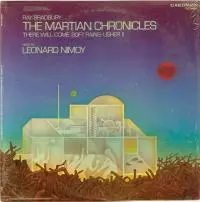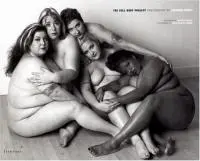We know him as an actor, primarily for the role of Spock on the original Star Trek television show, as well as the long-running series of feature films. If you're a science fiction fan, then you're probably familiar with his work in the 1978 version of Invasion of the Body Snatchers and the canceled-too-early Fox series Fringe. But Leonard Nimoy, who passed away this past February from pulmonary disease, was also a prolific author and a promoter of literacy and the bookish arts.
In commemoration of the man who told us to "live long and prosper," and who lived by his own advice, let's explore this lesser known side of Leonard Nimoy. We'll start with his numerous volumes of poetry.
Books of Poetry
Michael R. Burch, editor of the website The Hypertexts, writes:
Would it surprise you to know that Leonard Nimoy, who played Star Trek's coldly logical Mr. Spock, was in real life a warmly romantic poet?
I think most of us would answer yes to that question. And yet, Nimoy's output shows he's no lightweight poet. From 1973 to 2002, he released seven collections of his straightforward, simple verse, including one book combining poetry and photography (more on Nimoy's contributions to the latter medium later). The Hypertext published several of Nimoy's works online. Here is one, untitled and undated, featuring his favorite subject, love:
Today,
Time has stopped.
A minute is still a minute.
An hour is still an hour.
And yet,
The past and the future
Hang in perfect balance.
All focused on the present.
A sweet flow of excitement
Warms Me.
You are near.
The physical volumes are long out of print now, but you can pick up some pricey used copies via Amazon, or, as Burch suggests, check your local library.
Audio Books and Live Readings at Symphony Space
 Nimoy combined his love of literature and acting by recording four audiobooks for Caedmon Records in the mid 1970s, two of which brought to life the works of Ray Bradbury. The others featured readings of The War of the Worlds by H.G. Wells and Robert Heinlein's "The Green Hills of Earth" and "Gentleman, Be Seated." (I had no luck finding a link for the last one). The Martian Chronicles, released in 1975, featured Nimoy reading two stories from Bradbury's collection of the same name, "There Will Come Soft Rains" and "Usher II." One year later, Caedmon put out The Illustrated Man, featuring Nimoy's renditions of "The Veldt" (one of Bradbury's best short stories) and "Marionette's Inc." There's a YouTube playlist that compiles both Bradbury entries to the Nimoy/Caedmon catalogue, but for your immediate listening pleasure, check out "The Veldt" below:
Nimoy combined his love of literature and acting by recording four audiobooks for Caedmon Records in the mid 1970s, two of which brought to life the works of Ray Bradbury. The others featured readings of The War of the Worlds by H.G. Wells and Robert Heinlein's "The Green Hills of Earth" and "Gentleman, Be Seated." (I had no luck finding a link for the last one). The Martian Chronicles, released in 1975, featured Nimoy reading two stories from Bradbury's collection of the same name, "There Will Come Soft Rains" and "Usher II." One year later, Caedmon put out The Illustrated Man, featuring Nimoy's renditions of "The Veldt" (one of Bradbury's best short stories) and "Marionette's Inc." There's a YouTube playlist that compiles both Bradbury entries to the Nimoy/Caedmon catalogue, but for your immediate listening pleasure, check out "The Veldt" below:
[video: https://www.youtube.com/watch?v=dJAKjpb2eOs&list=PLUQdJOBCPME-37eNUh2KNjXGONC_UuGob&index=1]
Nimoy also made numerous appearances in New York City on the Symphony Space stage, reading classic works of literature to a live audience. He was such a mainstay with the organization that, according to Virginia Heffernan in her New York Times obituary for Nimoy:
The Thalia, a venerable movie theatre on the Upper West Side of Manhattan, now a multi-use hall that is part of Symphony Space, was renamed the Leonard Nimoy Thalia in 2002.
Selected Shorts, the radio broadcast featuring performances recorded at Symphony Space and elsewhere, published an encore presentation of Nimoy reading Delmore Schwartz's "In Dreams Begin Responsibilities" on their website. In the introduction to the piece, an unnamed writer states:
...to Selected Shorts fans, he was a consummate reader. Nimoy's performances of short fiction, over a period of more than twenty years, ranged from James Thurber's manic caper "The Catbird Seat" to powerful works by writers like Evelyn Waugh and Raymond Carver.
The former tale by Thurber was my personal introduction to Nimoy's literary performances, and his reading of "The Catbird Seat"—a sardonic but ultimately joyful tale about "a mild-mannered office manager plotting revenge on a pushy efficiency expert"—is comedically and poignantly pitch-perfect. Selected Shorts offers an MP3 download of this performance for $2.99, and it's worth several listens.
For a more darkly comedic tale, check out Nimoy's take on Raymond Carver's "What We Talk About When We Talk About Love," which you can listen to for free here.
Autobiographies
In an attempt to differentiate himself from his iconic Star Trek role, Nimoy published an autobiography in 1975 titled I Am Not Spock. Fans of the series were upset with this choice, as they felt the actor had rejected Spock. This wasn't true of course—his aim was simply to introduce fans to the man behind the character. As the jacket blurb states (reprinted on Memory Alpha, a Star Trek wiki page):
For 3 years, 12 hours a day, 5 days a week, he functioned as the half-human, half-Vulcan Mr. Spock, an extraterrestrial. He is not. He is Leonard Nimoy. An actor. A teacher. A writer. A father. A husband. A real flesh-and-blood human being.
The controversy persisted, however, and in later years Nimoy admitted the title was a mistake. In a 2012 interview with Star Trek Magazine (an excerpt of which was published at MTV.com), he spoke candidly about the backlash:
I said if I was given a chance to identify with any character on television, I would choose Spock. I admire him, I like him and I respect him. I would rather be identified with Spock than any other character on television. But the mistake I made was in using that title, "I Am Not Spock,' as the title of the book. If you read the book, you'll find quite the opposite.
Nimoy speaks the truth here. Had those angry fans actually read the text, they would see not only an actor quite literally gushing over his most famous role, but they would have also experienced Nimoy's plainspoken, evocative prose, quite similar to his poetry in its simplicity. Consider this passage from the first chapter of I Am Not Spock, "The Alien Connection," in which he discusses his youthful introduction to two movie "monsters," Quasimodo and Frankenstein's creation:
There is a moment when we are all touched by the humanity in these creatures that are supposedly inhuman, when the character, Spock, the Frankenstein monster, or Quasimodo, says, "I, too, need love." Millions respond and love pours out because we all need it and we all understand. When one is touched, by a flower or a drink of water, then we are all touched and we can cry for him and for ourselves. Tears of connection. And now I realize that all of this was preparation for the role of Spock.
Not one for holding grudges against uninformed fans, Nimoy wrote a second autobiography twenty years later, and, as a kind of apology for his previous mistake, he named it I Am Spock. In this book, rather than further separating the actor from the character, Nimoy states that Spock will always be a part of him. According to Wikipedia:
...the book's foreword is written by Mr. Spock himself, in the form of a letter the Vulcan writes to Leonard Nimoy, to express confusion over the highly illogical title. Throughout the book, Nimoy frequently has conversations with his other half, as he explores the choices and decisions he has made throughout his life and how those choices have been affected by a certain calm logical voice in the back of his mind.
Like his books of poetry, both I Am Not Spock and I Am Spock are out of print and fetch high dollars on Amazon, but for diehard Trekkies or anyone interested in the inner workings of Hollywood and the actor's craft, they're worth seeking out. (You can get the latter easily as an unabridged audio book via Amazon/Audible, by the way. And of course, Nimoy performs the reading himself.)
![]() Photography
Photography
Last but certainly not least, Mr. Nimoy displayed a considerable talent with the camera. Though not literary in a strict sense, his two books of photography nonetheless reveal Nimoy's storyteller inclinations, each being focused on a central theme.
His first volume of photographs appeared in 2002. Titled Shekhina—the name of the "feminine aspect of God," according to Jewish legend—the book garnered controversy upon publication, though of a different nature than the ire I Am Not Spock generated. Virginia Heffernan explains in her aforementioned obituary:
His black-and-white photographs of nude and seminude women struck some Orthodox Jewish leaders as heretical, but Mr. Nimoy asserted that his work was consistent with the teachings of the kabbalah.
More than the nudity, Nimoy's models were pictured "donning a tallit and tefillin—Jewish prayer accessories traditionally worn by men," according to a 2004 Washington Post article by Adam Gorlick.
These aesthetic choices were not arbitrary, however, but a means of challenging the separation of men and women in traditional Jewish culture, as well as concepts of blindness and blissful ignorance. Nimoy states the idea for Shekhina planted itself in his head at the age of eight, when he was told not to look at a special blessing conducted by members of the Orthodox synagogue. Years later, Nimoy asked the rabbi of a reform synagogue why the congregation wasn't allowed to view the blessing. The rabbi told him the it concerned Shekhina, who appeared and blessed the temple, but whose light was so powerful, looking upon it could kill you.
Hence, with his photographs, Nimoy seems to assert, "No, it's okay. LOOK at her." He told Gorlick:
I was trying to really completely enter into the world of the feminine. I didn't want to do misty, cloudy figures. I didn't want to shroud her. I wanted to make her flesh and blood, and I wanted to make her definitively female.
Five years later, in 2007, Nimoy extended this exploration of the female form with The Full Body Project. Here, the aim was to subvert typical "thin-is-in" notions of beauty. Thus, the book features black-and-white nude studies of plus-size women. From the blurb (via Amazon), Nimoy writes,
The average American woman weighs 25 percent more than the models selling the clothes. There is a huge industry built up around selling women ways to get their bodies closer to the fantasy ideal. Pills, diets, surgery, workout programs...The message is, 'You don't look right. If you buy our product, you can get there.'
As such, the message first communicated with Shekhina—that it's okay to view the female form—expands with The Full Body Project: it's not only okay to see women, but to see many varieties of body types, and to find beauty in all of them. Nimoy's images were praised for their "respectful approach," according to Rachel Simon of Bustle.com, as well as "his sincere attempt in demanding change within the industry." (Nimoy was a "staunch feminist" his entire life, even putting his own career on the line to demand his Star Trek co-star Nichelle Nichols received the same amount of pay as her male counterparts).
As with his books of poetry and autobiographies, both volumes of photography are out of print and hard to find on a budget. However, you can view a broad selection of images from Shekhina and the The Full Body Project at the R. Michelson Galleries website, which also features numerous other examples of Nimoy's photographic work, as well as artist's statements and commentary from his models.
With Leonard Nimoy's passing, we have indeed lost a true friend to books and literature. But let's hope his legacy as both a promoter of and contributor to the written word will resonate with future renaissance artists, inspiring them to commit equal amounts of passion to the written word or the prose-and-poetry-infused image. And let's also hope that, very soon, we'll see new editions of Nimoy's books, so that his work can reach the widest possible audience.
Rest in peace, Mr. Nimoy.

About the author
Christopher Shultz writes plays and fiction. His works have appeared at The Inkwell Theatre's Playwrights' Night, and in Pseudopod, Unnerving Magazine, Apex Magazine, freeze frame flash fiction and Grievous Angel, among other places. He has also contributed columns on books and film at LitReactor, The Cinematropolis, and Tor.com. Christopher currently lives in Oklahoma City. More info at christophershultz.com








